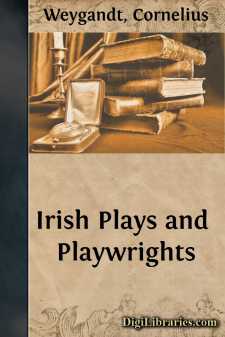Categories
- Antiques & Collectibles 13
- Architecture 36
- Art 48
- Bibles 22
- Biography & Autobiography 813
- Body, Mind & Spirit 141
- Business & Economics 28
- Children's Books 12
- Children's Fiction 9
- Computers 4
- Cooking 94
- Crafts & Hobbies 4
- Drama 346
- Education 46
- Family & Relationships 57
- Fiction 11826
- Games 19
- Gardening 17
- Health & Fitness 34
- History 1377
- House & Home 1
- Humor 147
- Juvenile Fiction 1873
- Juvenile Nonfiction 202
- Language Arts & Disciplines 88
- Law 16
- Literary Collections 686
- Literary Criticism 179
- Mathematics 13
- Medical 41
- Music 40
- Nature 179
- Non-Classifiable 1768
- Performing Arts 7
- Periodicals 1453
- Philosophy 64
- Photography 2
- Poetry 896
- Political Science 203
- Psychology 42
- Reference 154
- Religion 513
- Science 126
- Self-Help 83
- Social Science 81
- Sports & Recreation 34
- Study Aids 3
- Technology & Engineering 59
- Transportation 23
- Travel 463
- True Crime 29
Irish Plays and Playwrights
Categories:
Description:
Excerpt
Chapter I
To the general reader the Celtic Renaissance was a surprise, and even to Irish writers deeply interested in their country the phenomenon or movement, call it which you will, was not appreciated as of much significance at its beginning. Writing in 1892, Miss Jane Barlow was not hopeful for the immediate future of English literature in Ireland;—it seemed to her "difficult to point out any quarter of the horizon as a probable source of rising light." Yet Mr. Yeats had published his "Wanderings of Oisin" three years before; Mr. Russell had already gathered about him a group of eager young writers; and Dr. Hyde was organizing the Gaelic League, to give back to Ireland her language and civilization, and translating from the Gaelic "The Love Songs of Connacht" (1894) into an English of so new and masterful a rhythm, that it was to dominate the style of many of the writers of the movement, as the burden of the verse was to confirm them in the feelings and attitudes of mind, centuries old and of to-day, that are basic to the Irish Gael. Even in 1894, when Mrs. Katherine Tynan Hinkson wrote the article that for the first time brought before America so many of the younger English poets, all that she said of the Renaissance was, "A very large proportion of the Bodley Head poets are Celts,—Irish, Welsh, Cornish." She had scarcely so spoken when there appeared the little volume, "The Revival of Irish Literature," whose chapters, reprinted addresses delivered before she had spoken by Sir Charles Gavan Duffy and Dr. George Sigerson and; Dr. Douglas Hyde, turned the attention of the younger men to literature, the fall of Parnell and the ensuing decline of political agitation having given them a chance to think of something else than politics. In 1895 all the English-speaking world that heeds letters was talking of the Celtic Renaissance, so quickly did news of it find its way to men, when it was once more than whispered of abroad. It was as frequently referred to then as "The Irish Renaissance," because Ireland contributed most to it and because it was in Ireland that it acquired its most definite purpose. This purpose was to retell in English the old Irish legends and the still current Irish folk-songs, and to catch and preserve the moods of Irish men and women of to-day, especially those moods which came to them out of their brooding over Ireland, its history, its landscape, the temper of its people. It would be absurd, of course, to regard all of the writing of the movement as a result of a definite literary propaganda, but the very fact that we instinctively speak of the Celtic Renaissance as a movement rather than as a phenomenon proves that it was that in part. But even that part of it that was a result of propaganda came not from an intention to realize the tenets of the propaganda, but from the kindling of Irish hearts by thoughts that came of the propaganda, thoughts of the great past of Ireland, of its romance of yesterday and to-day, of its spirituality....


